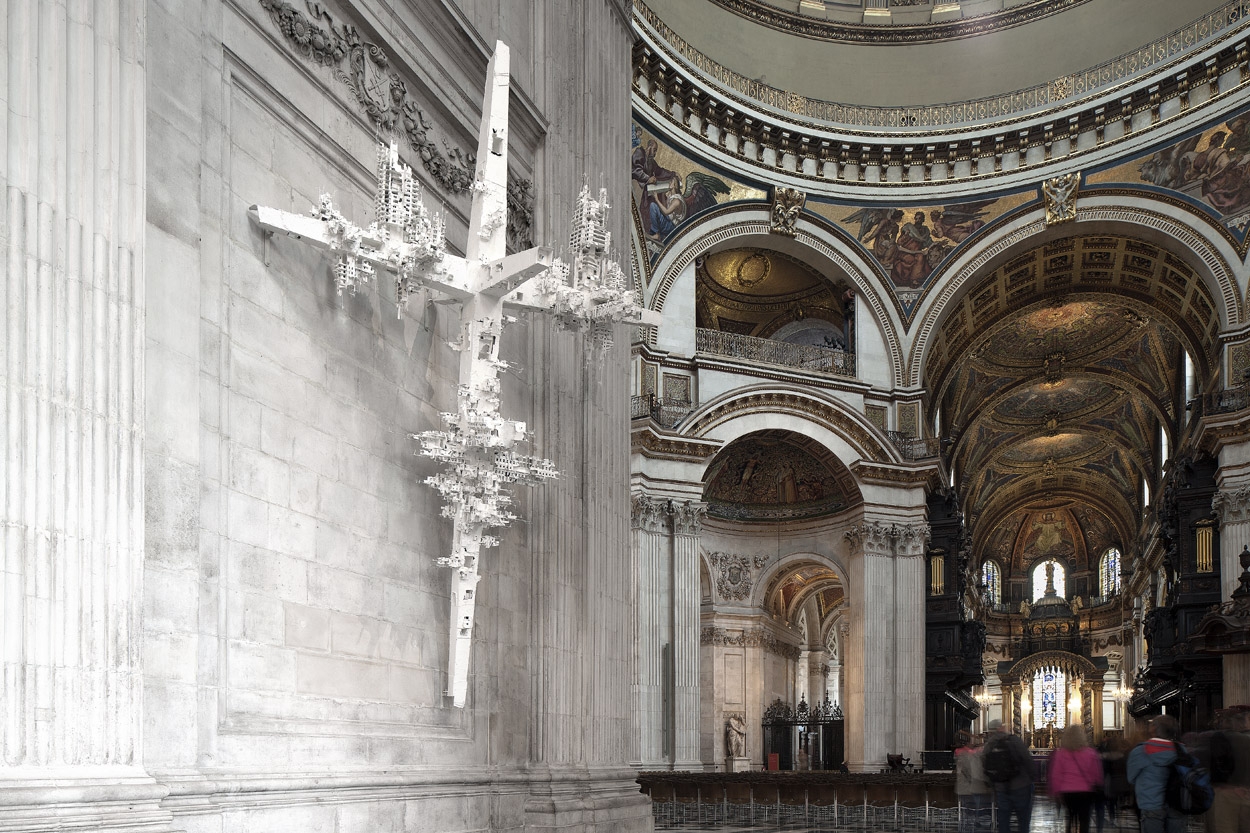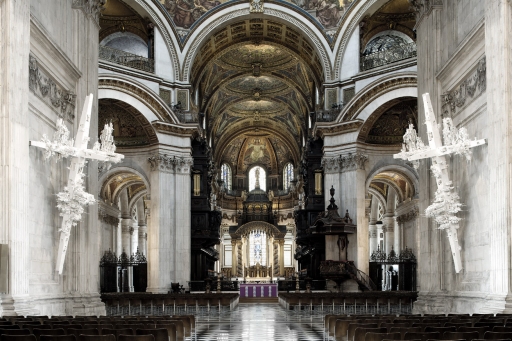Twin sculptures have been installed at St. Paul’s Cathedral in London to mark 100 years since the start of the First World War.
Designed by Gerry Judah, he describes their shape and striking white colour as “evoking the meticulously maintained war graves of northern France and further afield”. He further describes the sculptures as representing “an utterly contemporary questioning of the continued need for warfare”.
Each cross has protruding from it the shells of bombed residential blocks which are not confined to the First World War, the sculptor highlights they also resonate with modern day visualisations of warfare, including in Syria.

Mr. Judah wants his sculptures to represent the “wantoness and wastefulness they represent should also remind us of the ravaged earth of the First World War, of the millions of young men sacrificed defending or attacking mere yards of mud”. However, he also hopes that “in these works [we will see] the waste and pity of all wars”.
He makes the link between the dismemberment of the Ottoman Empire at the end of the First World War and how instability in the Middle East today has been influenced by that.
Mr. Judah has delivered art which is “unafraid of the obvious”, but which also deals with some “great abstract themes”, including God, life, death and love. The ambiguities in his art have been consciously crafted in order to accentuate that war is rarely a case of “good vs. evil”.
Canon Mark Oakley, Chancellor of St Paul’s Cathedral, described the sculptures as “confronting us with the reality of a war that saw thousands and thousands of young people from around the world buried with white crosses over their remains”
“They also provoke us into interrogating the present world and the landscapes we casually view on the news every day, scarred and agonised by military hate in the hearts and minds of those who survive”.
Source: Gerry Judah
Images courtesy of Gerry Judah; taken by David Barbour
Posted by: Daniel Barry, Centenary News
